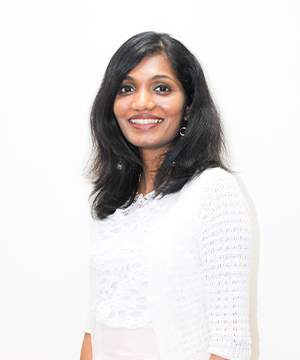In the last decade, marketers have progressed slowly but steadily. It was not uncommon for marketers, 10 years ago, to focus primarily on their domain and use SEO and SEM for traffic management. Marketers cannot condone such a gap in their perception of the customer in today’s omnichannel environment.

Recently, marketers have also begun to use other channels such as mobile displays, social media, and programmatic displays. Initially, these channels have been managed independently to produce “multi-channel marketing,” but later, they integrated their channels to provide a “cross-channel” brand message.
For companies that are focused on attracting and retaining consumers with more choice and higher expectations, omnichannel marketing has become a priority.
Like other trades in the modern era, omnichannel is an area of tremendous potential, frequently debated, but seldom well accomplished. This practice includes addressing obstacles and uncertainties that hinder other businesses from making their true vision happen.
There is no doubt that data is growing at an exceptional rate and, especially, the increasing number of consumer data fundamentally alters the way brands work in the region.
Given the impending future without cookies, improvement in personalized targeting increased with consented customer information such as Consumer Data Platforms and Consumer Panels. The growth in 1st-party data provides marketers with an excellent view of the customers in their online world. Companies are also increasingly equipped to furnish marketers with offline customer data, such as Point-of-Sale (POS) systems, geofencing, and beacons.
Impacts of Isolated Online and Offline Data
The inability of a brand to integrate its data online & offline adversely affects the ability of a company to intelligently trigger the omnichannel, holistic strategic considerations, and exploit media usage nuances. Their value at a scale is all at the ultimate cost of the marketer’s desired return on media expenditure due to a lack of understanding and a lack of attribution between online & offline world. Silo-based media and two-dimensional digital media consumption are still high across the Asian Pacific both for online and selected offline outlets.

Digital’s share of ad spend across the region will expand from just over 50% in 2019 to 59% by 2023, with online video contributing 20%, and although less spent on conventional offline media platforms in general, these traditional channels still account for a substantial proportion of promotional budgets. Out-of-Home, is still going strong in the South East Asia region, having grown +19% in 2019. In planning for these campaigns, brands are of course using the rich data for both their online and offline consumers to inform their segmentation and targeting. The issue is that both data sets live in isolation from one another, and media planning teams are unable to use online data to influence offline media planning and measurement, and vice versa. The lack of a bridge results in media planning that is divorced from the complex reality of how consumers behave across channels.
Consumers aren’t two-dimensional, unlike our existing online and offline data usage. They do not live in online and offline siloes, and their purchases are no longer predictable.
Most marketers are familiar with the all-round concepts of web-building (where consumers collect information about the goods online and then buy them offline) and showrooming (where consumers are visiting the stores physically to look and feel the product before making their purchase online), But even those concepts are oversimplified representations of how dynamic the purchase journey has become. Consumers do not flow constantly through a funnel but a maze of actions and connections with the brand in the path to purchase as they move through online and offline touchpoints. In fact, understanding this maze and getting a single view of the consumer when they seamlessly move online and offline is critical.
Bridging the Gap Between Online and Offline Data
Digital networks have been leading the way since they attempted to link or bridge the gap between offline and online platforms. Why is it required? Why cannot customers get a different experience for each channel? It is because, with the advent of digital platforms, consumer perceptions have changed drastically.

Easier to communicate with brands using digital technologies led them to expect smoother and seamless offline/physical brand interactions. In short, they wanted an all-round experience that would blur the distance between offline networks.
Cross-channel marketing is all about delivering marketing strategies to consumers through different platforms both offline and online.
The marketers must merge networks with each other in order to bridge the gap between the offline-online, to transfer data, and to process it from one channel to the other. Different technologies like APIs, RFID, etc. may be used.
Vanity URLs often act as a cross-channel marketing tool that reduces offline distance. Such URLs are shortened web addresses that are easy for customers to recall. Using these URLs on offline assets like a flyer, print ad, or banner, consumers can be motivated to search the URLs on phones, tablets, or computers.
Marketers will sell the goods online and have their customers picked up from the brick and mortar shop to create a seamless shopping experience.
And salespeople can also allow products bought online to return to a physical shop. Items bought from physical stores can also be returned digitally by requesting a pick-up of the items. The cashback can also be credited directly to the customer’s bank account.
There was one of America’s famous retailers who experimented in bridging the gap between online and offline data—Macy’s. The company noticed that consumers frequently review items on their website before visiting a physical store. The company thus wanted to give consumers exposure in the store in order to see if their favorite items were available in the nearest shop. Macy also offered various shipping options, such as home delivery, click-and-collect, etc., which really resonated with consumers and helped increase the company’s revenues.
Marketers may use location-based targeting to drive consumers to purchase products while they are on the go.
It can be achieved by providing a smartphone push notification when they enter or exit a geofenced area. They can also be monitored by beacons when entering the shop. Marketers use beacon technology to give customers a personalized experience while they shop. Therefore, the offline-online link is enhanced and at each stage of the customer journey, there is an interaction.
For instance, a person enters the mall and triggers the geofence. An app pushes notification pops-up on his device about some exciting offer going on in his favorite store. The customers are encouraged to visit the store even though they do not intend to go to it in the first instance in real-time.
Conclusion
When consumers expect enriching experiences across all touchpoints, irrespective of online and offline platforms, marketers will strive to achieve that. A clear transition should be made from an offline to an online platform from the consumer viewpoint, and vice versa. To step up the ladder, marketers must follow omnichannel marketing strategies that primarily bridge the gap from offline online to provide consumers with a clear and seamless experience across all available channels.










